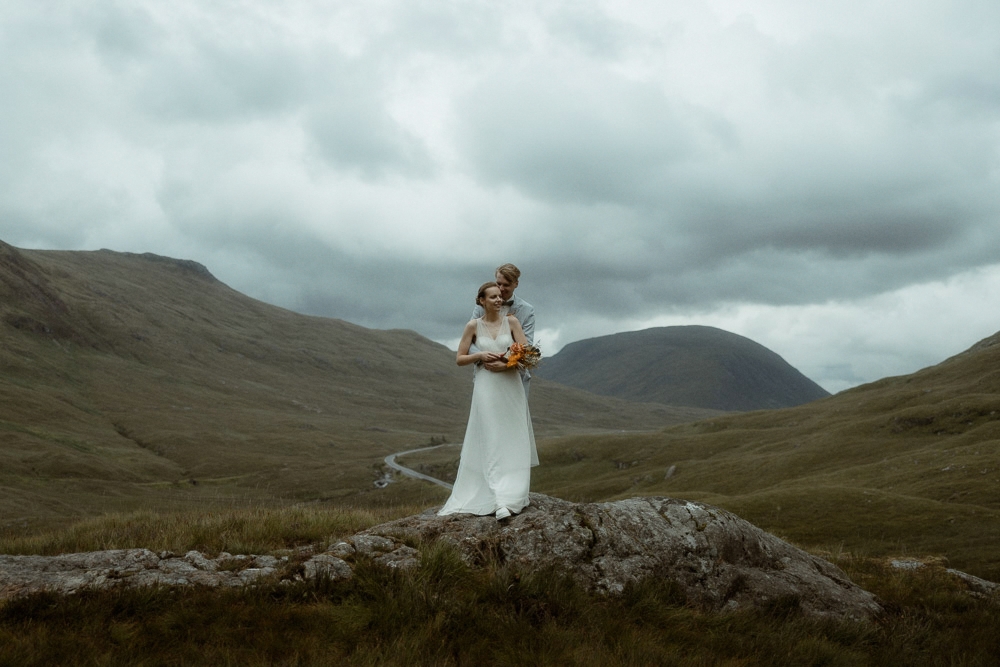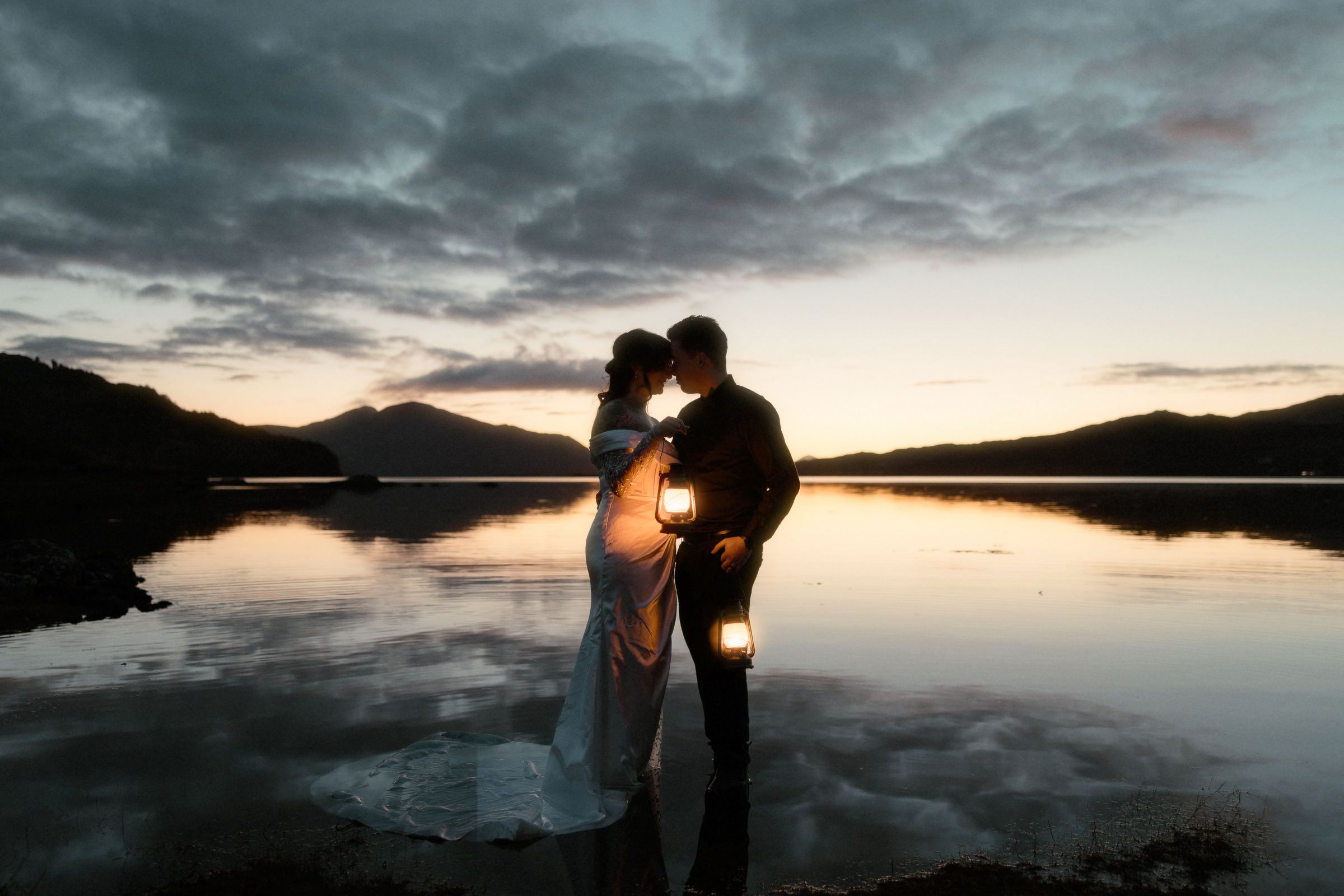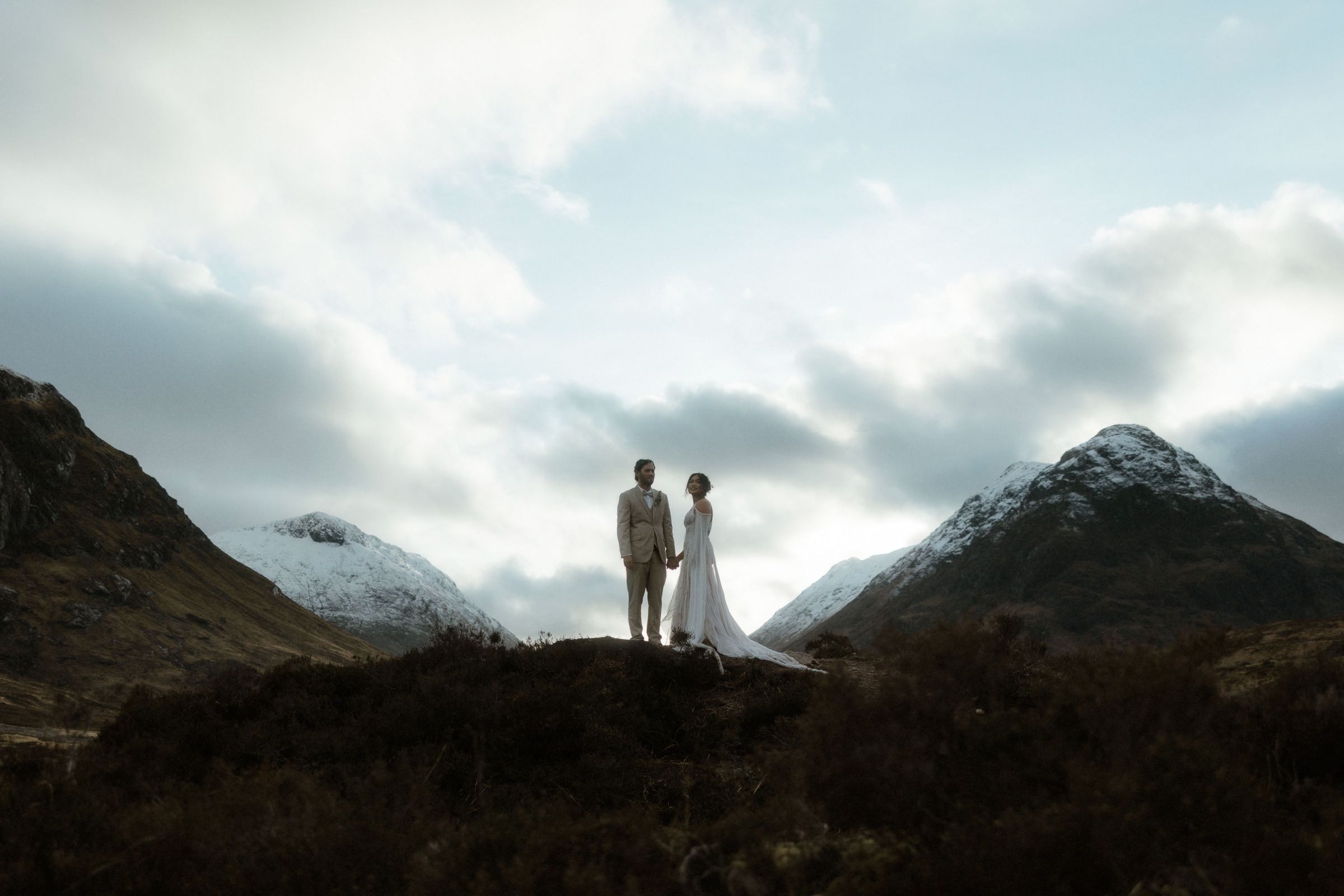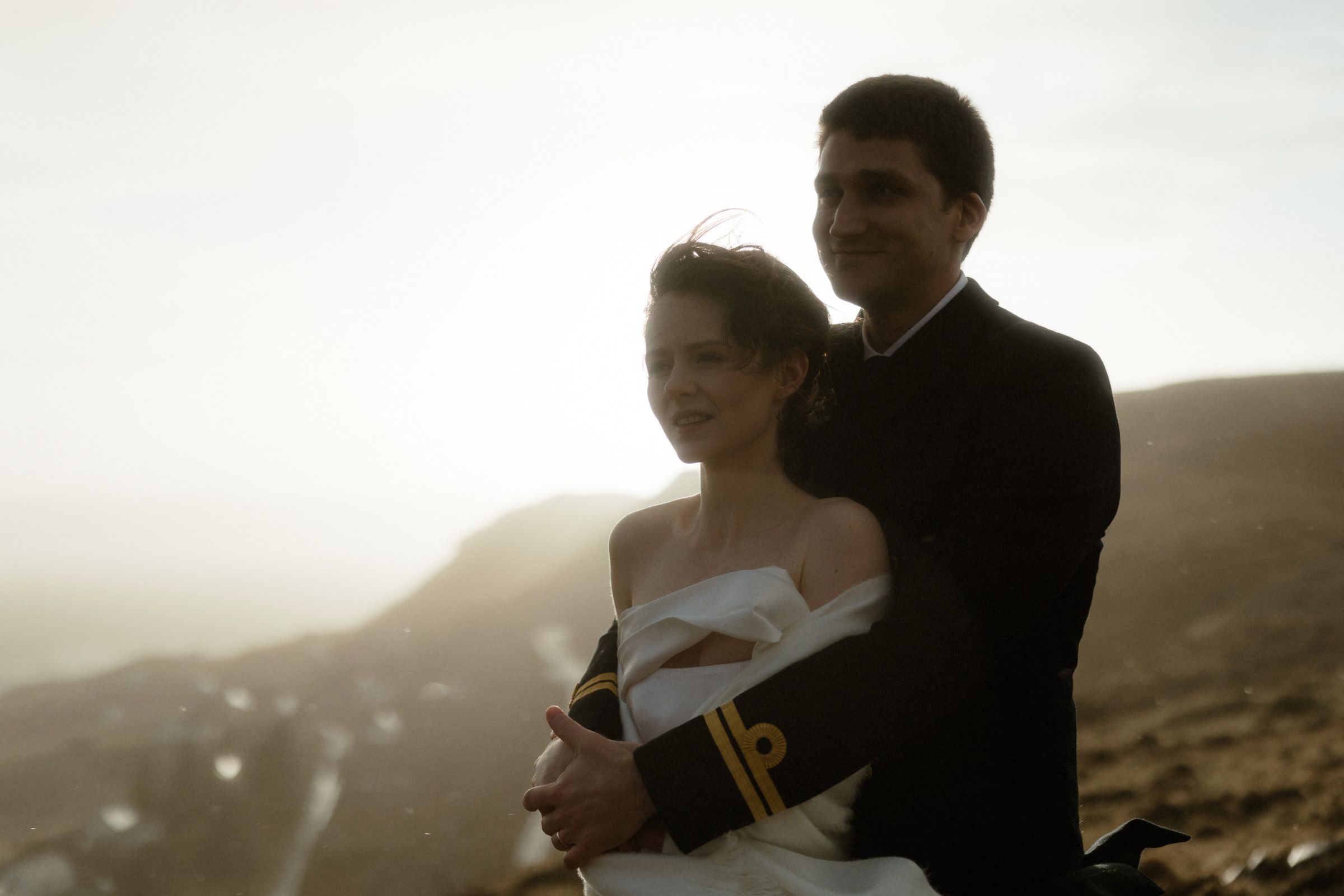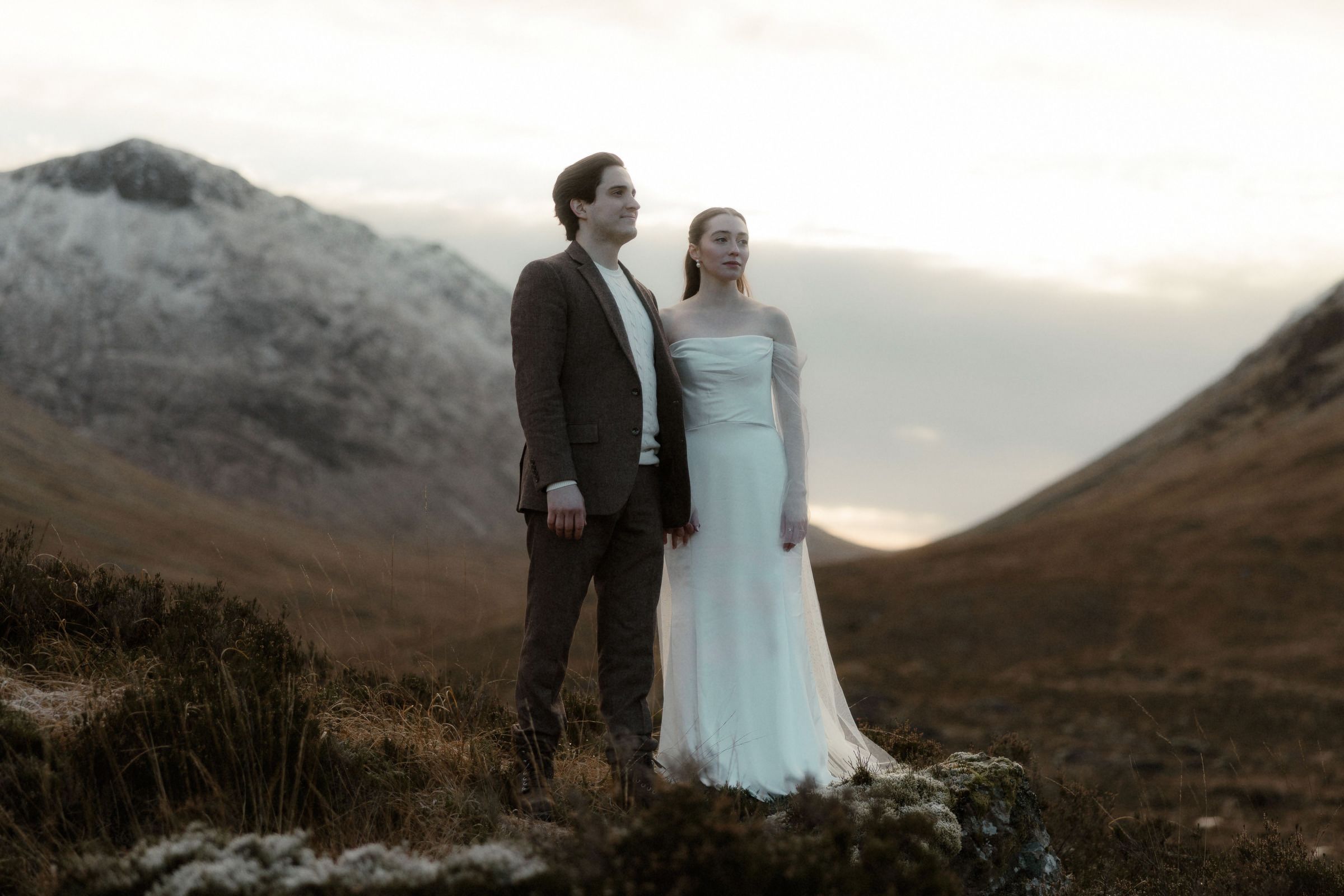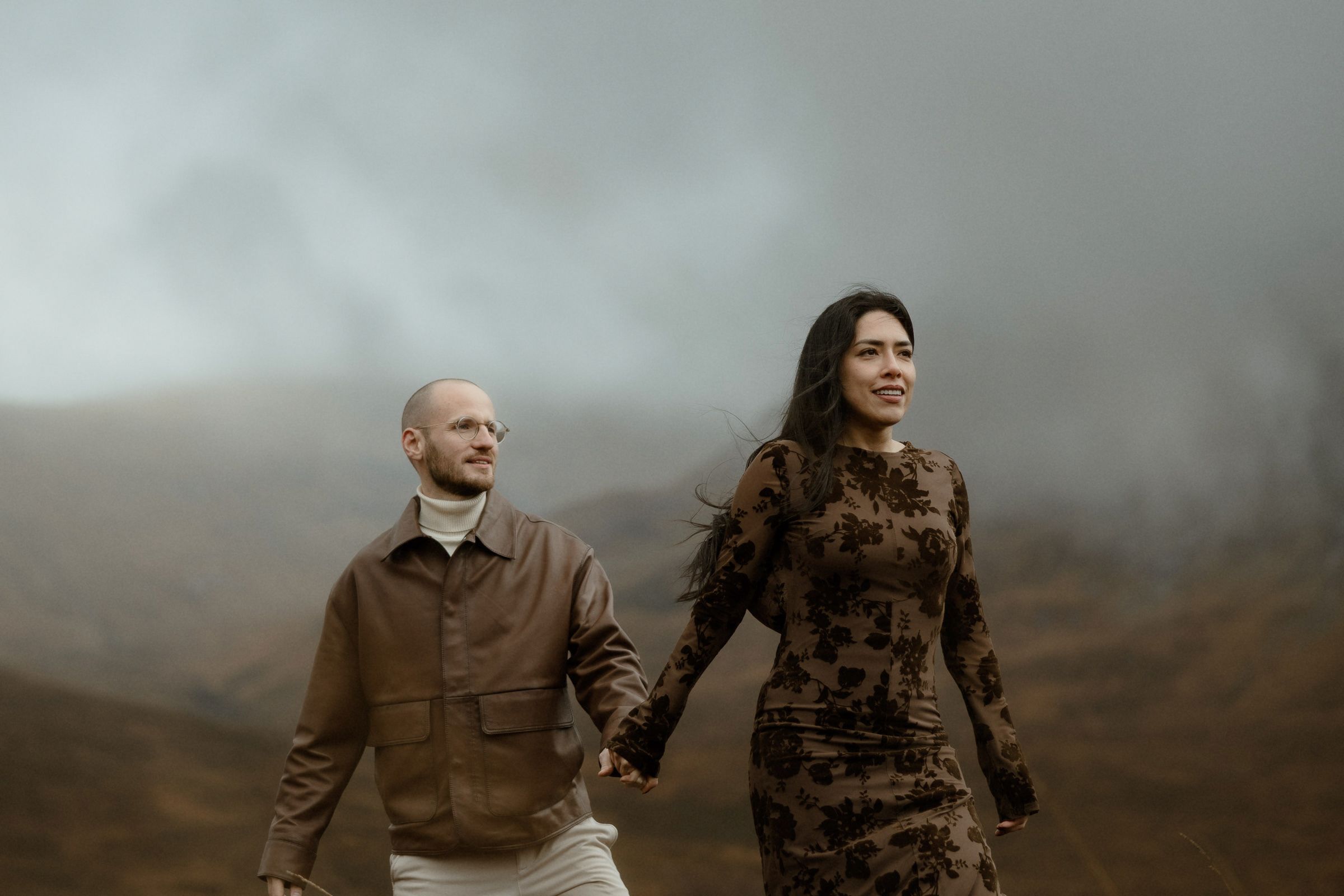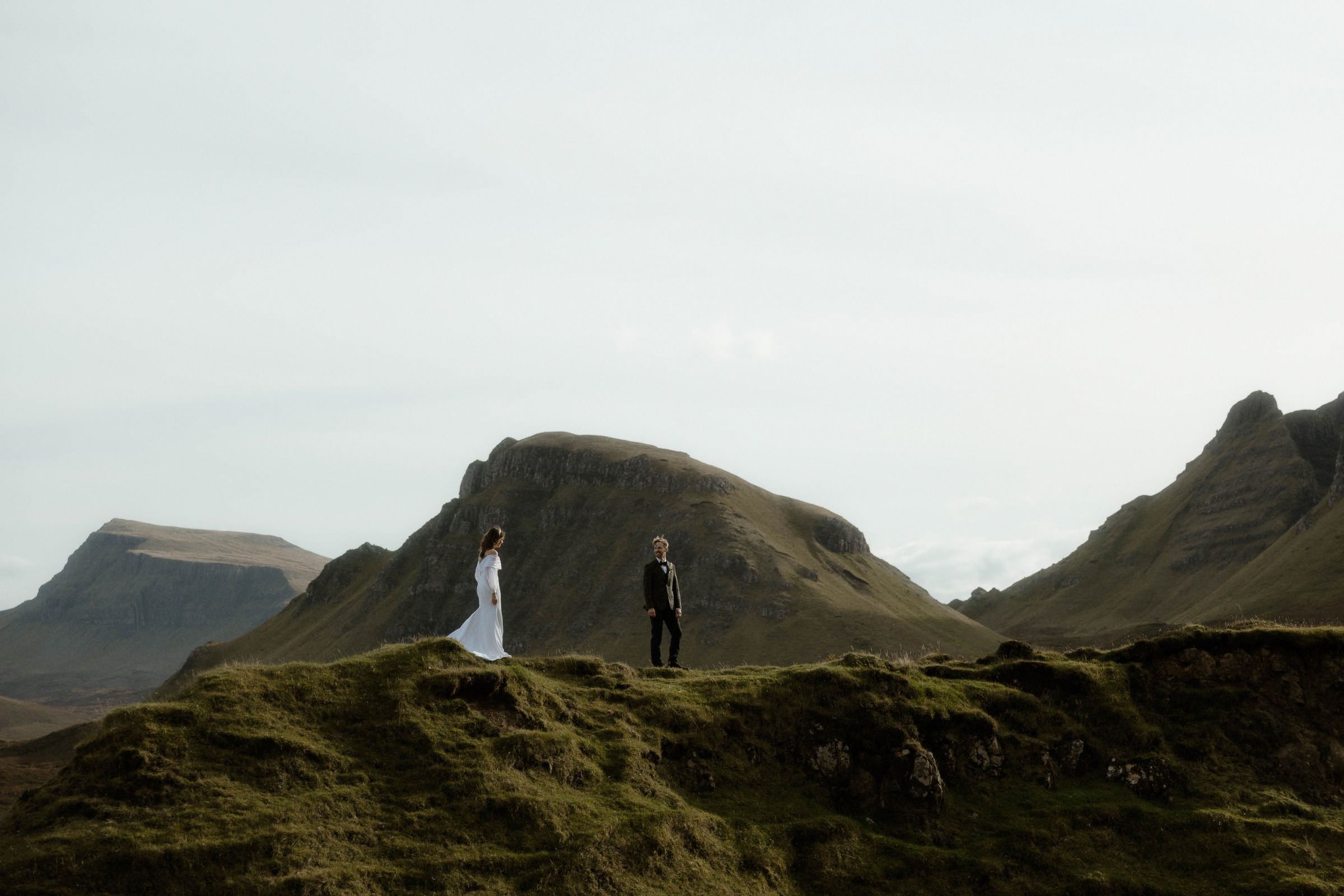Last updated: January 2025
Introduction
Here it is! The third edition of my Scotland Elopement Planning Guide! One of my most popular elopement guides, the Scotland Elopement Planning Guide was once a small blog to help get couples started in the planning of their elopement here in Scotland. It has since evolved into what you see today – a comprehensive guide to eloping in Scotland covering all the important topics, all the must-complete elements and with advice and guidance from an experienced, professional elopement photographer sprinkled on top. Please feel free to save this guide as a PDF and use it for reference – there is some advice relevant to all couples here, whether you are already in the middle of planning your elopement or starting from scratch.
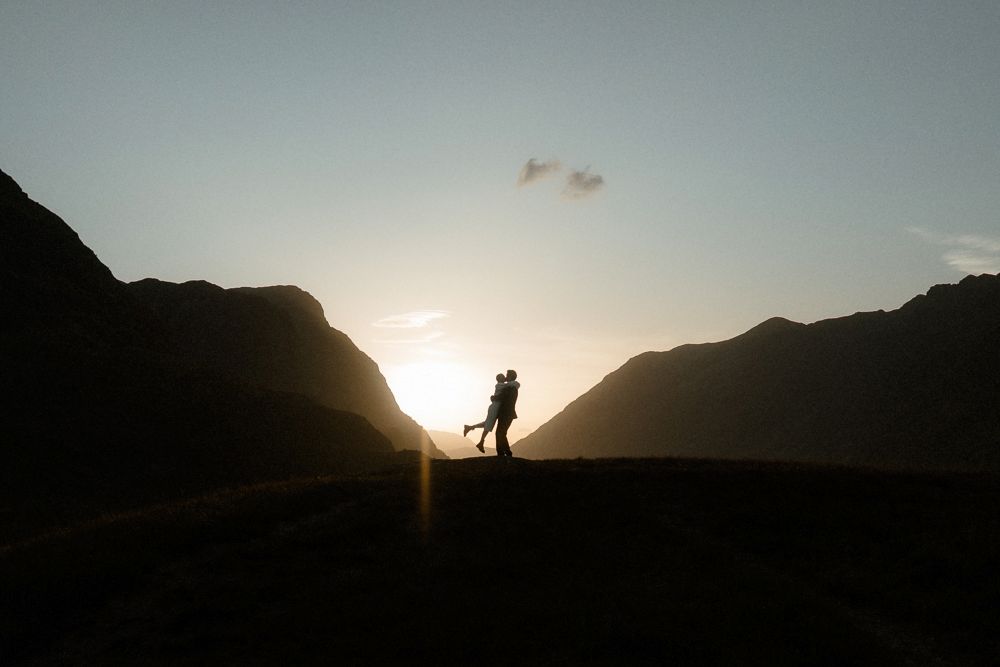
So what are my credentials? Firstly, I’m a full-time, professional elopement photographer based in Scotland, working with couples from all around the world to help craft their perfect elopement; second, I have also planned a number of all-inclusive elopements for couples who wished to tie the knot in the Scottish Highlands, so I have a deep understanding of the process involved; and finally (and most importantly), my wife and I eloped in Scotland ourselves a few years ago. I can therefore resonate with what are likely to be anxious feelings about taking a route to marriage that’s a little different to the norm, and I’m here to show you that planning an elopement in Scotland is an incredibly easy and short process, resulting in a day that is filled with love, joy and authenticity, in a location that has to be seen to be believed.
In fact, planning an elopement is so simple that it can be done in 10 key steps! In this guide I’m going to talk through everything you need to know to get started on the process, what the process looks like, and hopefully by the end of it you’ll have a complete and thorough understanding of what’s involved. Although elopements can be as unique as you are, the process for planning and booking your vendors is roughly the same, and this Scotland Elopement Planning Guide is designed to be relevant to all who wish to elope. So without further ado, let’s find out how to elope to Scotland in 10 easy steps!
1. Pick a Date
The first step for anyone wishing to elope in Scotland is to decide when you’d like to do so. An exact date isn’t necessary right away, but rather the season and month. Do you want lush green mountains covered in wildflower? A spring elopement is probably for you. Do you want long daylight hours and a chance of a beautiful Highland sunset? Maybe the summer is best. Would you prefer orange and brown hues and moody weather? Autumn is perfect for this. Or maybe you’re attracted to the idea of snow-capped mountains and a Chrismassy feel? A winter elopement may be for you.
There are other things to consider also, such as the school holidays increasing the number of tourists in August and September, the midges that come out in summer, the cold temperatures and strong winds in winter and the higher chance of rain in Spring and Autumn, but in reality each season has it’s advantages and disadvantages and the choice will come down to your own priorities.

My favourite season for elopements is mid-autumn to early winter: there are fewer tourists, the colours are wonderful, the daylight hours are more manageable and the weather is usually more dramatic, which helps create that moody feel. It’s also easier to find accommodation at this time of year, with a wide range typically available, and normally at a lower cost. But in all honesty you can’t really go wrong, no matter when you decide to elope.
One final thing to know is that planning an elopement can be a much shorter process than planning a traditional wedding, which means you may not need to wait until the following year to elope within your chosen season. Many of my own couples plan their elopements within the year in which they choose to elope, and I’ve seen some plan a Scottish elopement in under three months! Technically, with some luck regarding supplier availability, it could be done in six to eight weeks, but you chances of finding your ideal suppliers are much higher with just a month or two of extra time to plan. Many of us within the industry are accustomed to these shorter lead times, and so even if you think you won’t have enough time to plan your elopement, the chances are you do, so keep planning and speak to your chosen photographer or humanist celebrant to get some advice on your planning.
2. Choose a Location
The second step to planning your Scotland elopement is deciding on a region in which to elope. When I say region, I mean the larger, more generic areas such as Glencoe, the Isle of Skye, Loch Lomond and the Trossachs, the Cairngorms or elsewhere. There’s no pressure to know exactly which spot you’d like to elope at just yet, and your photographer will be able to recommend some spots within your chosen region based on your preferences, likes, dislikes and accessibility requirements. But choosing the larger region is important to aid in your initial planning, particularly when it comes to finding accommodation or planning an elopement that fits within a larger trip to Scotland. So which region is best for you? Lets dig into some of the most popular regions…
Glencoe – One of Scotland’s most famous regions, Glencoe is known for its iconic Buachaille Etive Mòr mountain at the foot of the valley, the little white Lagangarbh hut, and the Three Sisters mountains. Glencoe is breathtaking, rugged and spiritual, and makes up around 50% of my elopements in Scotland. The Glencoe valley is relatively compact, meaning that you can explore many of the most popular spots in a short space of time, and if you do have the time, Glen Etive branches off from the Glencoe valley and is easily accessible. It is also close to Glasgow airport (around 90 mins) and is situated between Glasgow and the Isle of Skye, making it the perfect location if you want your elopement to be part of a larger trip to Scotland. It is also a good choice of region when the weather is bad, as many beautiful spots can be found a short walk from the car, meaning that you aren’t out braving the elements for too long!
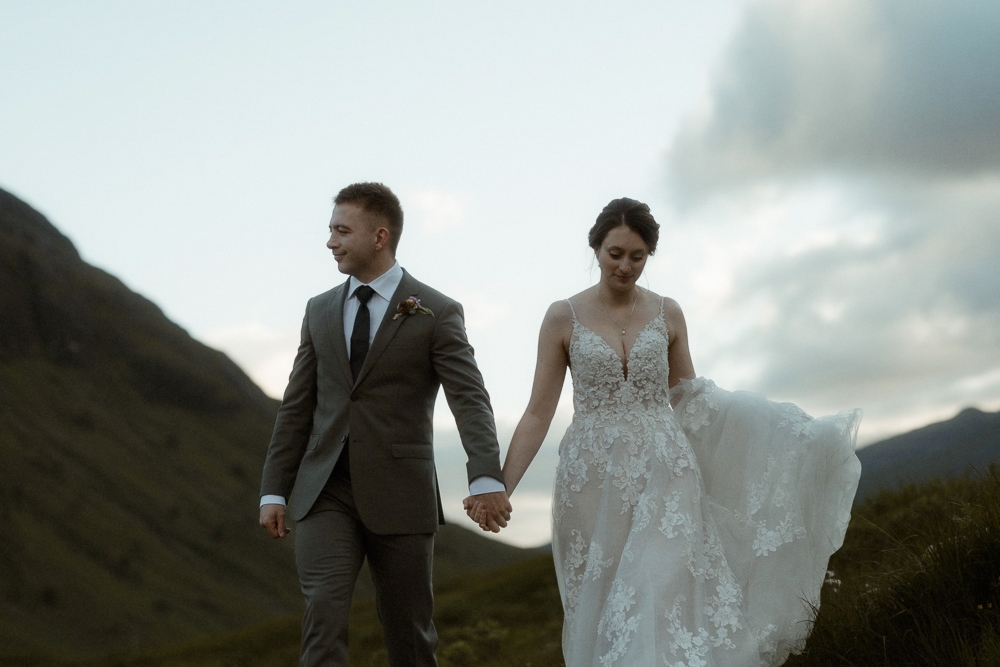
The Isle of Skye – The misty isle, as it is affectionately known, makes up around 45% of my elopements, but looks like it may overtake Glencoe soon for me in terms of number of elopements per year. The Isle of Skye is a bucket list type location, with many travelling to Scotland each year for the sole purpose of staying on the island. Clearly this is for good reason! I like to describe the Isle of Skye as Glencoe on steroids – the landscape is bigger and grander, the mountains are higher, and the lochs are larger. It is, in my opinion, one of the most beautiful parts of the world. Spots such as the Quairaing or the Fairy Pools are why the Isle of Skye is held in such high regard, producing views that are truly once in a lifetime. There are some downsides however, as the larger size of the region means more time is spent travelling between spots, and the island is a few hours of driving away from the nearest airport, but the Isle of Skye’s sheer beauty and mistique more than make up for it!
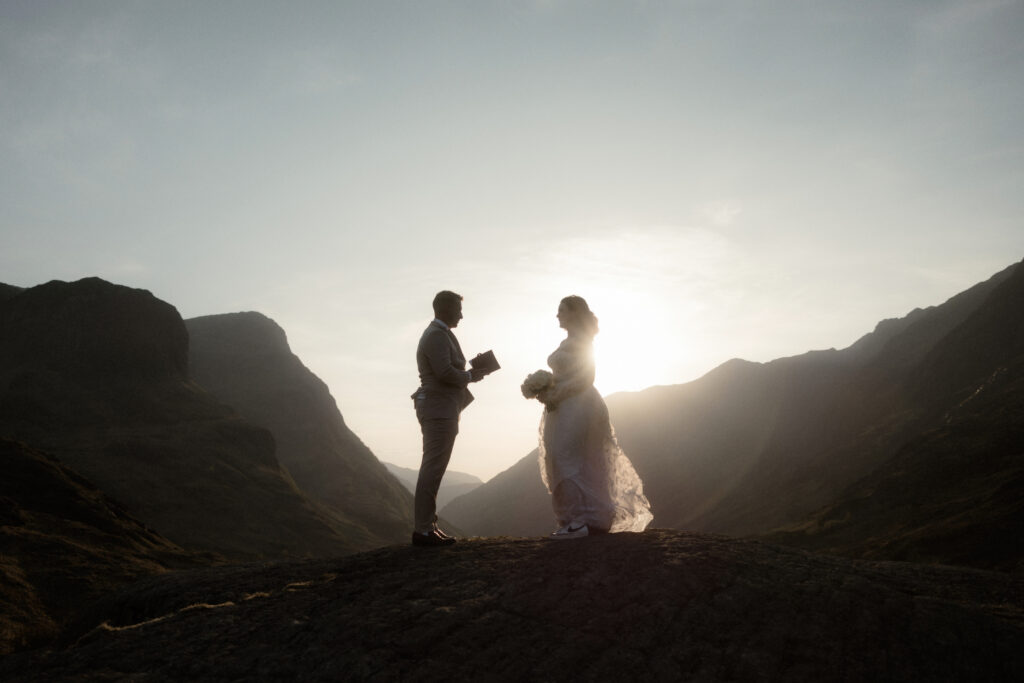
Loch Lomond and the Trossachs – Although entering Glencoe by road feels like the start of the Scottish Highlands, the boundary between the Lowlands and Highlands is actually found slightly further south, in the Loch Lomond and the Trossachs National Park. Situated very close to Scotland’s largest city of Glasgow and relatively easy drive from Edinburgh, Loch Lomond is a wonderful choice for an elopement for its serenity, peacefulness and beauty. Loch Lomond has a very different feel to somewhere like Glencoe or the Isle of Skye, and instead of rugged mountains and sharp cliff edges, you find enchanting forests and hidden waterfalls. Accommodation choices are a little lighter in Loch Lomond, but the region is a lot quieter in terms of tourism, bringing an even more intimate feel to your elopement.
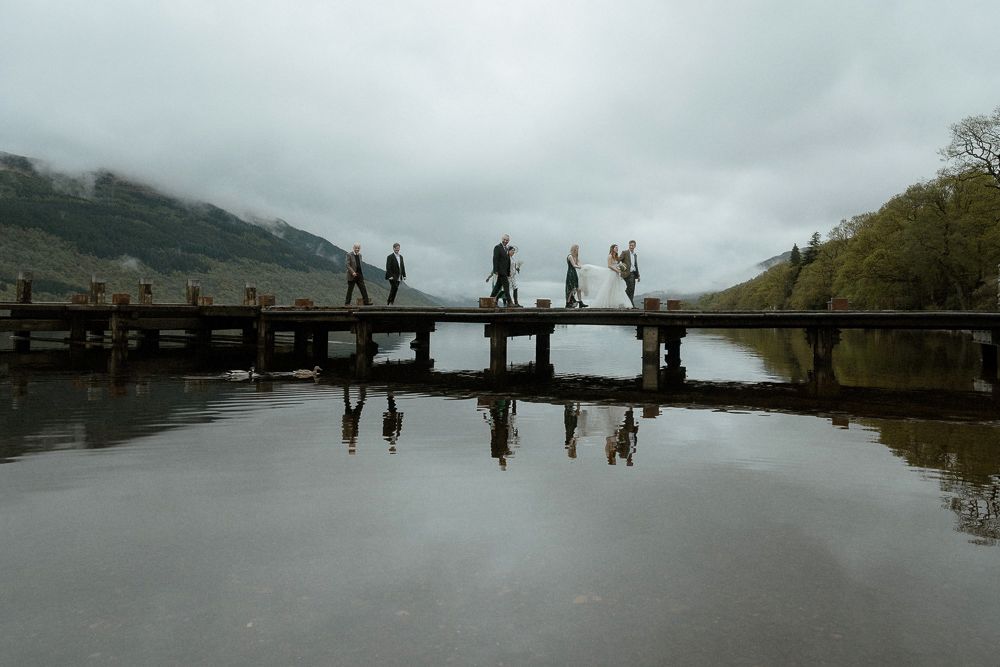
The Cairngorms – Famous for its stunning hidden lochs and its use as a getaway for the Royal Family, I like to think of the Cairngorms as a cross between Loch Lomond and Glencoe. It has the vast forests of Loch Lomond, but also the stunning peaks of Glencoe – it even has a ski resort operational through the winter! There is a beautiful choice of cosy, hidden accommodation littered throughout the region, and it is relatively accessible from both the east and west coasts of Scotland, and therefore the Cairngorms is a beautiful choice for any elopement in Scotland.
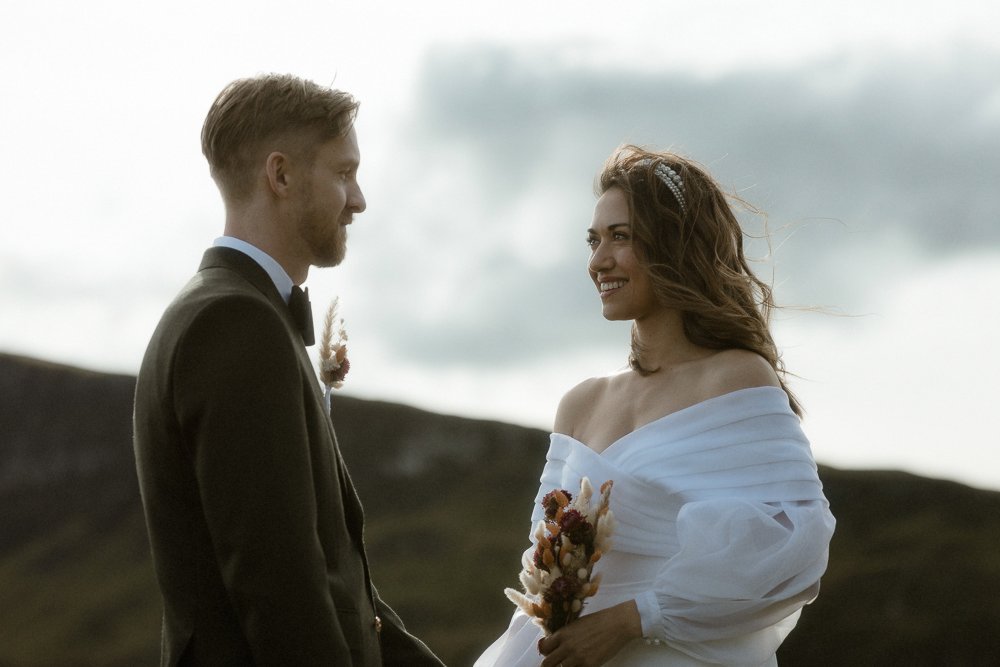
3. Book Your Photographer
Step three in the process to plan your Scottish elopement is to book your photographer. This is clearly a very personal choice, and your photographer should be aligned with your vision and energy, and a good connection is important since an elopement photographer plays a much bigger role on your day than a typical wedding photographer would during a traditional wedding. And this is why finding and booking your photographer early on in the process is so important. Your elopement photographer is not only responsible for capturing your day, but is also your best source of recommendations for accommodation, ceremony spots, your other suppliers, building your itinerary around your requirements, keeping an eye on timings on the day, guiding you across the landscape and driving you from spot to spot on your elopement (if required).
This is also a good time to settle on a specific date and region, so that your photographer can get to work with sending relevant recommendations and assisting with your planning.
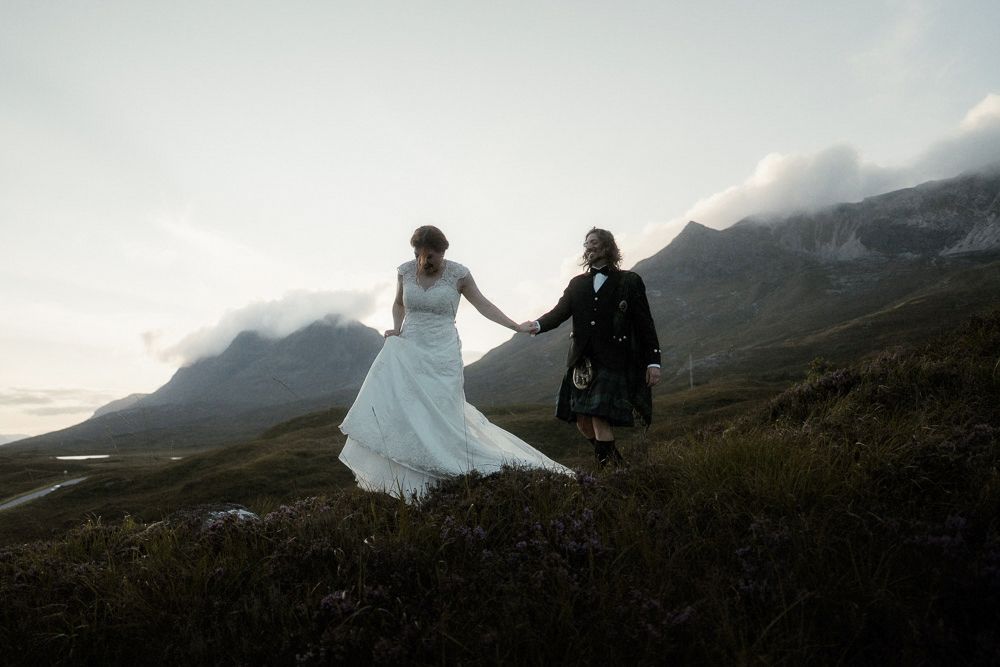
If you still aren’t sure on the region and date for your elopement, speak with your photographer and ask for some galleries from different regions and in different seasons – this will give you a good idea of what to expect on the day.
4. Find a Celebrant
There are a number of ways in which you can plan your elopement, whether that’s with a legally binding ceremony (yes, you can legally elope outside, almost anywhere in Scotland!), a symbolic ceremony, or a simple vow reading. If you choose either of the first two options, you’ll need a humanist celebrant to conduct your ceremony, and they really add to your elopement day in terms of its emotion and its beauty.
Humanist celebrants conduct personal, intimate ceremonies crafted around you and your requirements. Some couples want a short and impactful ceremony, others prefer a longer ceremony that includes many of the Celtic traditions such as hand fasting and drinking from the quaich, and your humanist will work closely with you to create your perfect ceremony.
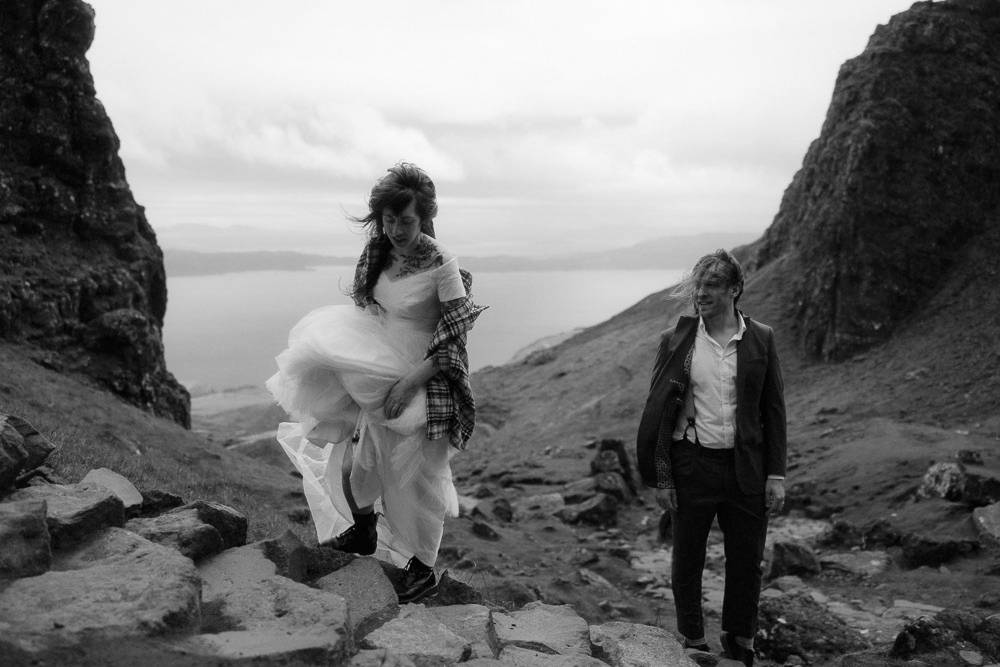
There is an incredible choice of humanists located around Scotland, some are based in these regions, but most are able to travel and meet us at your ceremony spot on the day. The best place to start in finding your humanist is the Humanist Society Scotland website, where you will be able to check availability and locate your perfect humanist. Humanists can book up quite far in advance as many of them cover traditional weddings as well as elopements, so be sure to start your search at around the same time you book your photographer.
5. Choose Your Witnesses
At this point it’s also a good idea to identify who will act as your witnesses if conducting a legal ceremony here in Scotland. Two witnesses are required to sign your marriage paperwork (schedule) at the end of your elopement ceremony, and often this will either be two of your guests if eloping with a group of friends and family, or the photographer/humanist and partner. I am honoured and privileged to have witnessed many elopements in my time as an elopement photographer in Scotland!
6. Book Your Accommodation
Step six in the elopement planning process is finding your accommodation. The Scottish Highlands, no matter which region, has a beautiful selection of accommodation perfect for your elopement. Some choose country hotels with restaurants, others choose self-catering cottages and AirBnBs, and both have their advantages. Clearly with a hotel you usually have a restaurant on site perfect for your evening celebration meal, and with cottages you have a bit more space for your morning preparation photographs and the aesthetic is often a little nicer, but both are fantastic options for your elopement.
One type of accommodation I would try to avoid if you are planning to include coverage of your morning preparations are the tiny-home, ‘pod’ type AirBnBs – space is often extremely tight and it can make preparations difficult and cramped. However, these are perfect for a minimoon getaway in the days after your elopement if you choose to extend your celebrations and enjoy the Highlands!
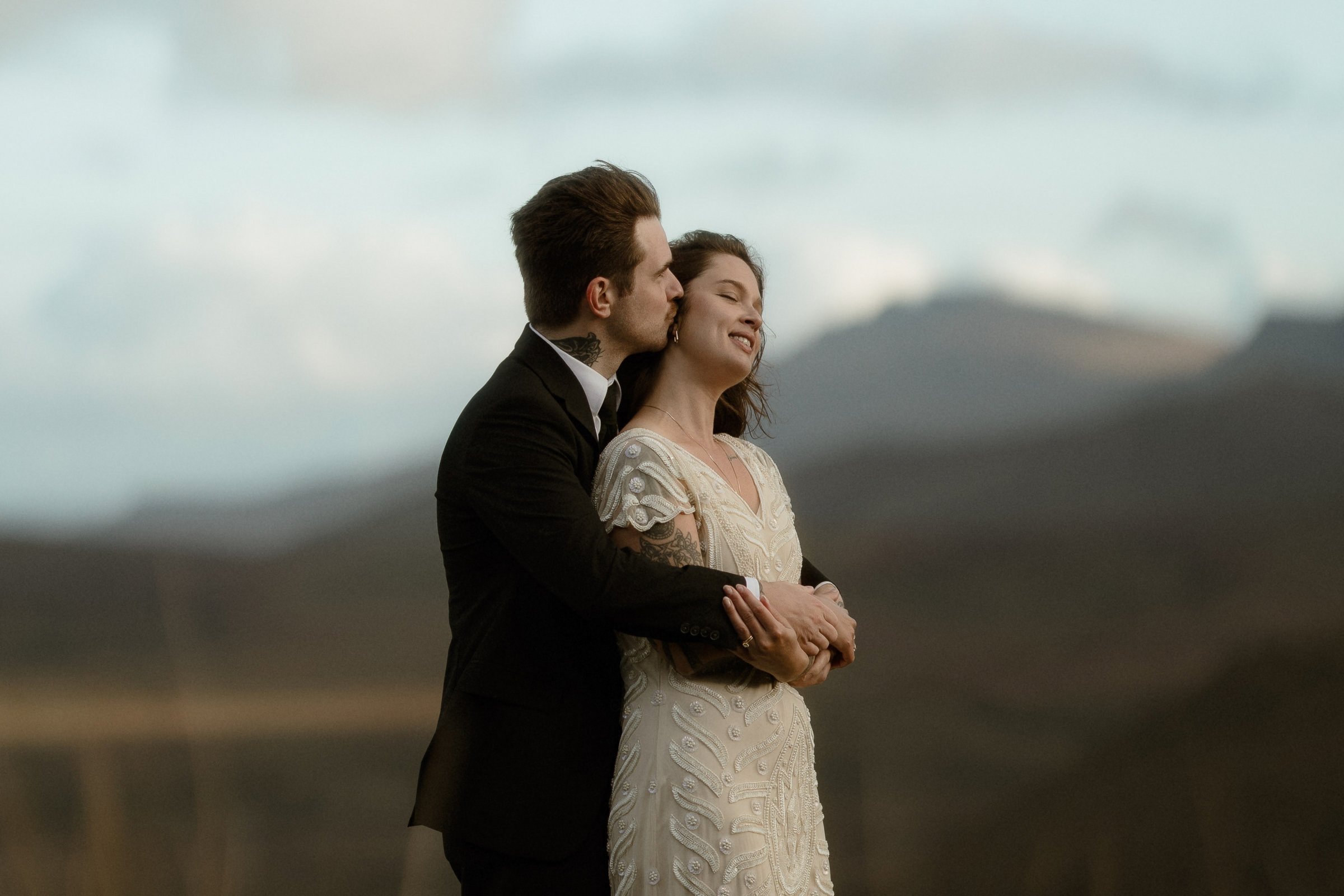
When my couples secure their date with me for their elopement photography, I provide a list of recommended accommodation based on region, with a mix of hotels and self-catering cottages depending on their needs.
7. Secure Your Suppliers
For many, the photographer, humanist and accommodation is all that’s needed. But many choose to include additional suppliers to enhance the experience, and this is something I recommend. A hair and makeup artist is recommended to remove one of the stresses of your elopement morning, and there are a number of local florists in the Highlands who produce beautiful, seasonal, dried flowers to add some colour to your day and provide a memento to remember it by.
8. Submit the Paperwork
Whether you are planning a civil, religious or belief ceremony, if you are planning to legally marry in Scotland the process is largely the same. Both parties are required to send an M10 Marriage Notice form to the nearest registrar to the area in which you plan to elope. For example, the M10s for a Glencoe elopement would need to be sent to the Fort William registrar’s office, and for an Isle of Skye elopement this would be the Portree registrar’s office. This form also contains important information for those travelling to Scotland from outside the UK for their elopement.
The M10 form and any accompanying paperwork should be submitted to the registrar’s office no earlier than three months, and no later than 29 days before the date of marriage. Don’t worry if you are eloping from overseas though – many registrars allow for photocopies to be emailed over, with the originals shown when collecting the marriage schedule in the days before the ceremony, but check with your registrar first.
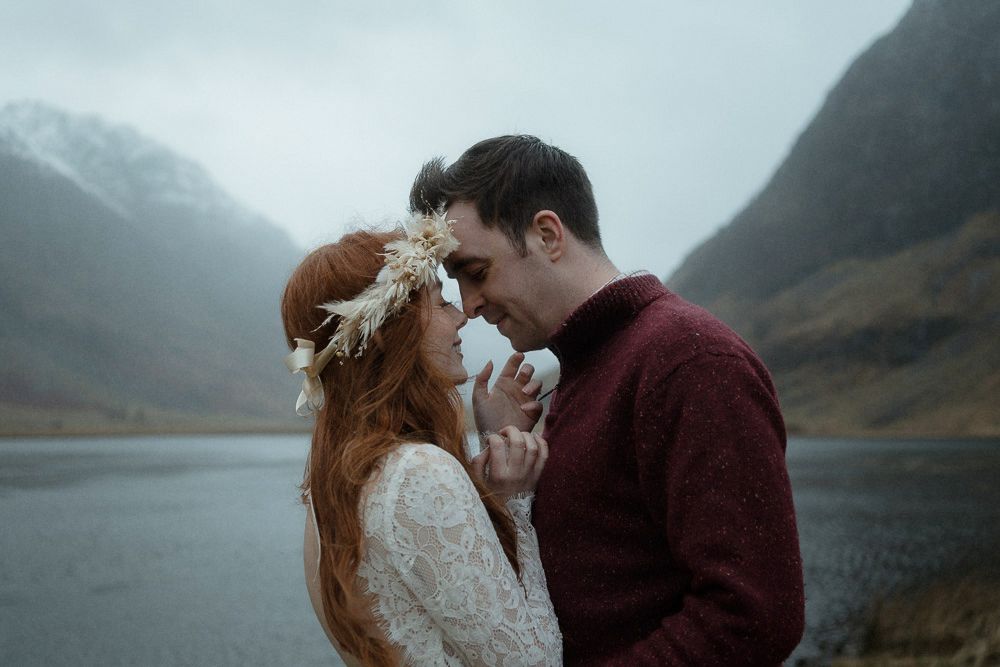
If you are visiting from overseas, you may require a marriage visa to conduct the legal ceremony in Scotland. You can check whether you need a visa and find out the steps to obtaining one here. In most cases, the timeline for completing this paperwork aligns with the steps for the marriage schedule in Scotland, and so it is best to start completing these documents together when you are three months from your wedding date. I always send a reminder to my couples at the three month point to ensure they begin the process early enough for any issues to be easily rectified.
9. Collect Your Marriage Schedule
Step nine is when things really start to get exciting for your elopement, because at this point you will be in Scotland! You should receive a call from the registrar once your marriage has been approved, and your marriage schedule can be collected from the registrar’s office no earlier than seven days before your elopement. Please check the office’s opening times and factor in this trip to collect your marriage schedule into your travel plans, as you can’t hold a legal ceremony without it! For example, if you are planning to elope on a Monday, you will likely need to be in the area on the previous Friday to ensure the registrar’s office is open for collecting your schedule.
On the morning of your ceremony, or when we arrive at your ceremony spot, your celebrant will collect your marriage schedule from you ready for completion after the ceremony.
10. After the Ceremony
You just got married! Your wedding dress is probably a little grubby, your boots still wet and your hand fasting secured safely in your suitcase, but we’re not quite done yet: the marriage schedule must be returned to the registrar’s office within three consecutive (not working) days of your ceremony so that the marriage can be registered, so make sure this visit is also factored into your travel plans. Fortunately, many registrar’s offices have a post box specifically for this task, so that you can drop off your marriage schedule on a weekend if necessary.
After receiving your marriage schedule, the registrar will then begin the process of issuing you a marriage certificate, which is posted to your home address within a few weeks.
Summary
There we have it! 10 easy to follow steps on planning a Scotland elopement. Of course, not all elopements are the same, just as no two couples are, but the process is typically similar for all elopements and hopefully this guide has provided you with a North Star on your journey to marriage in the Scottish Highlands.
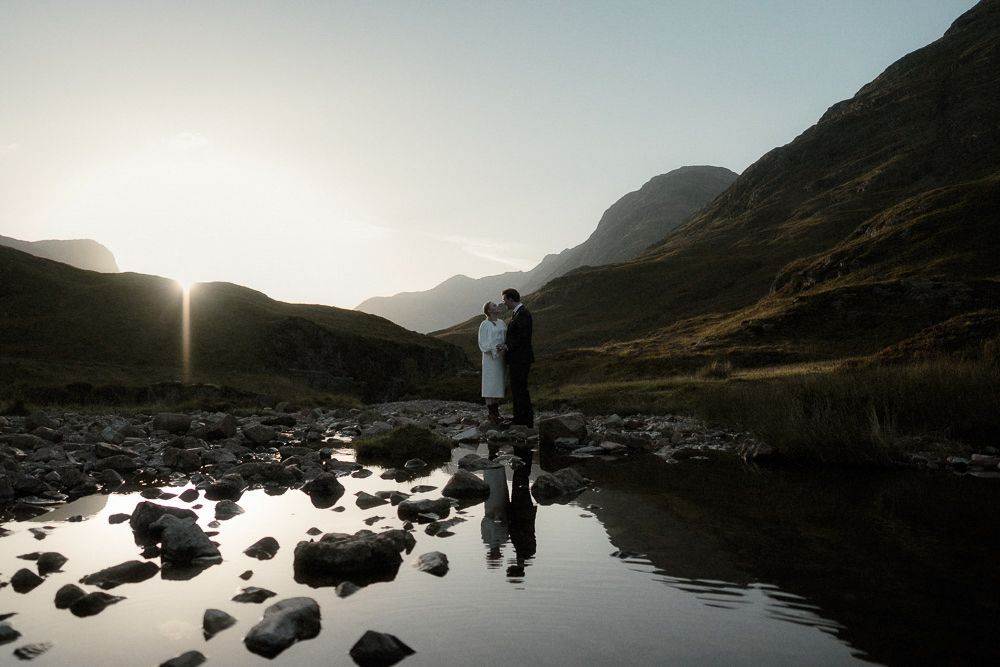
If you’re in the process of planning your elopement here in Scotland, or at the very early stages of deciding on if you want to elope, as long as you follow the 10 steps laid out in this guide, you can’t go too far wrong!
There really is no way more intimate, personal and spectacularly beautiful to get married than eloping in Scotland, and the day can be planned in a matter of months. So, what are you waiting for? Let’s get you married in the most epic and cinematic fashion imaginable!
